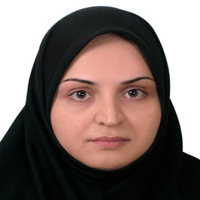Bacteriological Modelling of Semnan Drinking Water Distribution
Author(s):
Abstract:
Microbial quality of potable water is of the most import guidelines of the World Health Organization (WHO). One of the main concerns of water supply and distribution network problems particularly in large cities is microbial growth in the pipelines that are significant non-compliers and repeatedly detect bacteria in finished drinking-water. In Iran, chlorine is mostly used as disinfection agent in conventional chemical treatment process in water treatment plants for supplying safe drinking water. This is done to maintain a residual concentration within a water distribution system for preventing the growth of pathogenic bacteria. Therefore, to meet water quality standards, it is necessary to maintain free chlorine residuals throughout the minimum and maximum levels for various reasons. This study was conducted to examine the relationship between residual chlorine concentration, turbidity and microbial quality of water used for drinking in water distribution system of city of Semnan. Heterotrophic Plate Count (HPC) bacteria was used as an indicator for microbial quality and residual chloride concentration and turbidity were selected as the main parameters for determining correlation. In this research, for the first time Water-Gems as a comprehensive and easy-to-use water distribution modeling application bacteriological software with GIS system was employed as a tool to evaluate the microbial water quality in the network of Semnan city which is known as drawn area with limited water resources. Water-Gems is a multi-platform hydraulic and water quality modeling solution for water distribution systems with advanced interoperability, geospatial model-building, optimization, and asset management tools. For the study, all required information from water supply system such as topographical references, type and diameter of pipelines, pressure head in the system and connections were imported in the software. Then sampling points were selected and 25200 samples were made for turbidity, residual chloride concentration and HPC bacteria. The results indicated that there is high correlation between free chloride residual, turbidity and HPC which means that lower chloride concentration caused the increase in turbidity and HPC number. This information can be used to formulate a bacterial growth control strategy.
Language:
Persian
Published:
Quranic Knowledge Research, Volume:12 Issue: 4, 2013
Page:
91
magiran.com/p1106116
دانلود و مطالعه متن این مقاله با یکی از روشهای زیر امکان پذیر است:
اشتراک شخصی
با عضویت و پرداخت آنلاین حق اشتراک یکساله به مبلغ 1,390,000ريال میتوانید 70 عنوان مطلب دانلود کنید!
اشتراک سازمانی
به کتابخانه دانشگاه یا محل کار خود پیشنهاد کنید تا اشتراک سازمانی این پایگاه را برای دسترسی نامحدود همه کاربران به متن مطالب تهیه نمایند!
توجه!
- حق عضویت دریافتی صرف حمایت از نشریات عضو و نگهداری، تکمیل و توسعه مگیران میشود.
- پرداخت حق اشتراک و دانلود مقالات اجازه بازنشر آن در سایر رسانههای چاپی و دیجیتال را به کاربر نمیدهد.
In order to view content subscription is required
Personal subscription
Subscribe magiran.com for 70 € euros via PayPal and download 70 articles during a year.
Organization subscription
Please contact us to subscribe your university or library for unlimited access!



